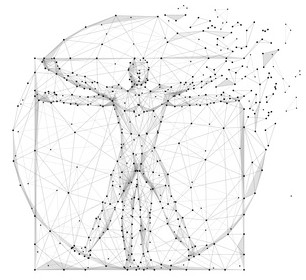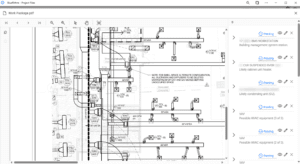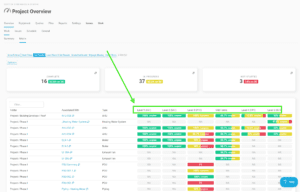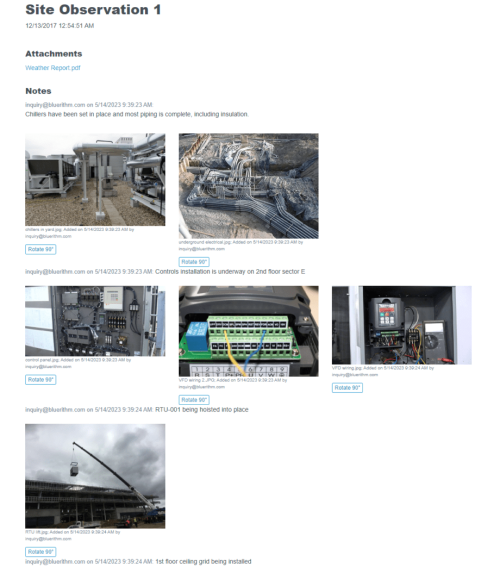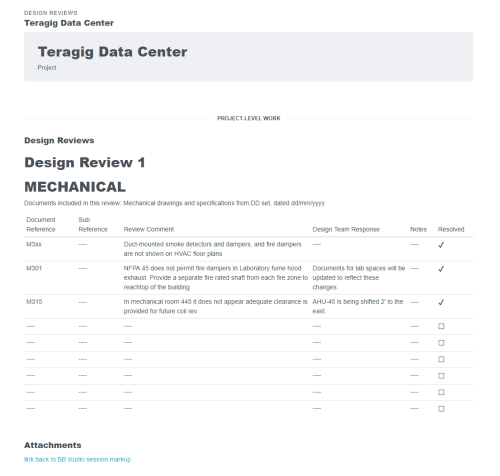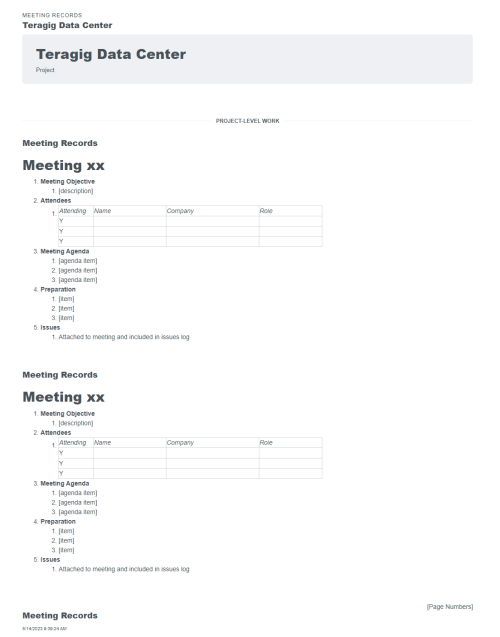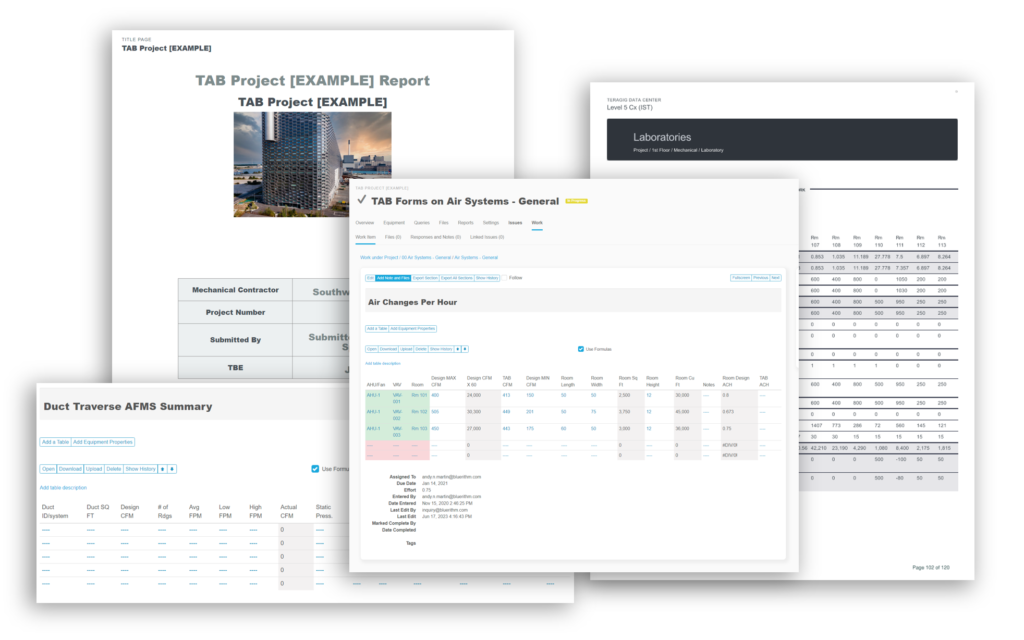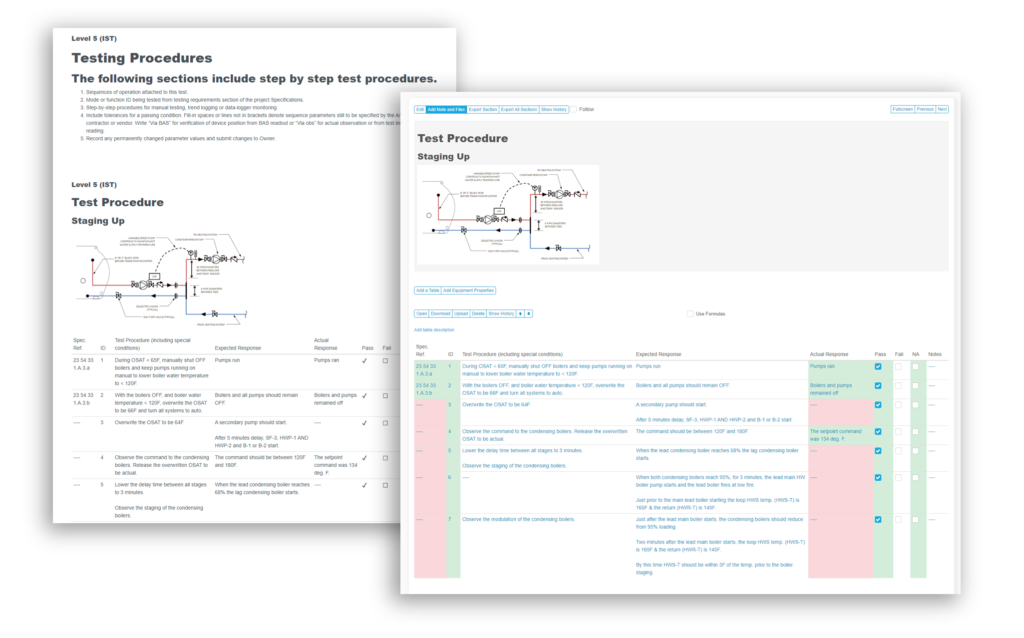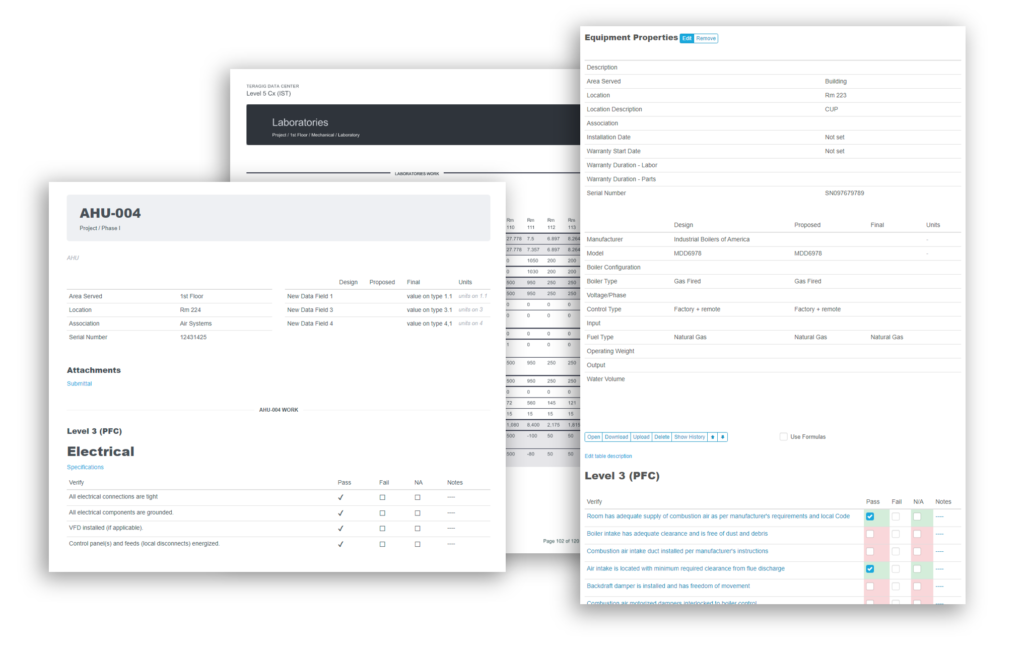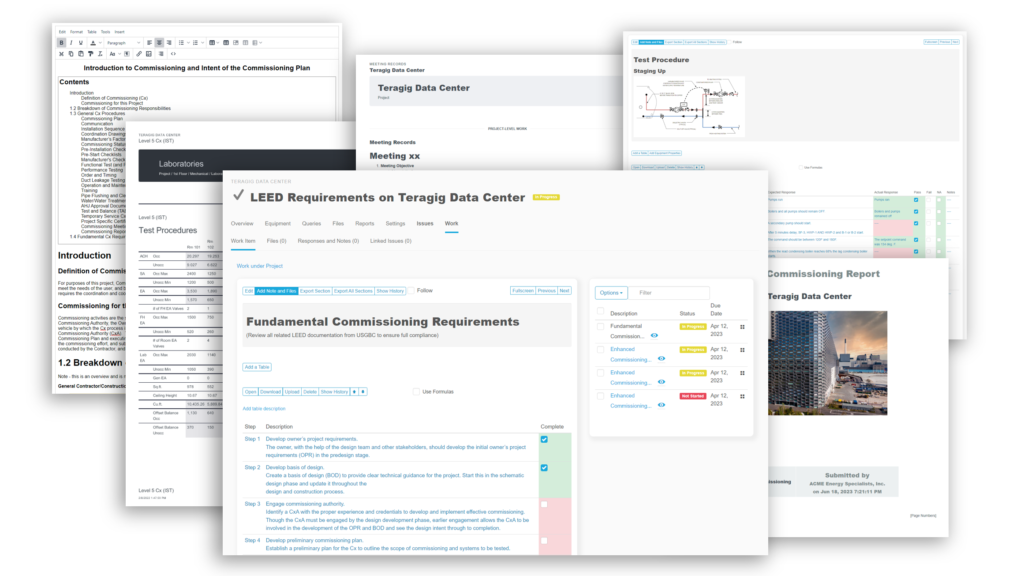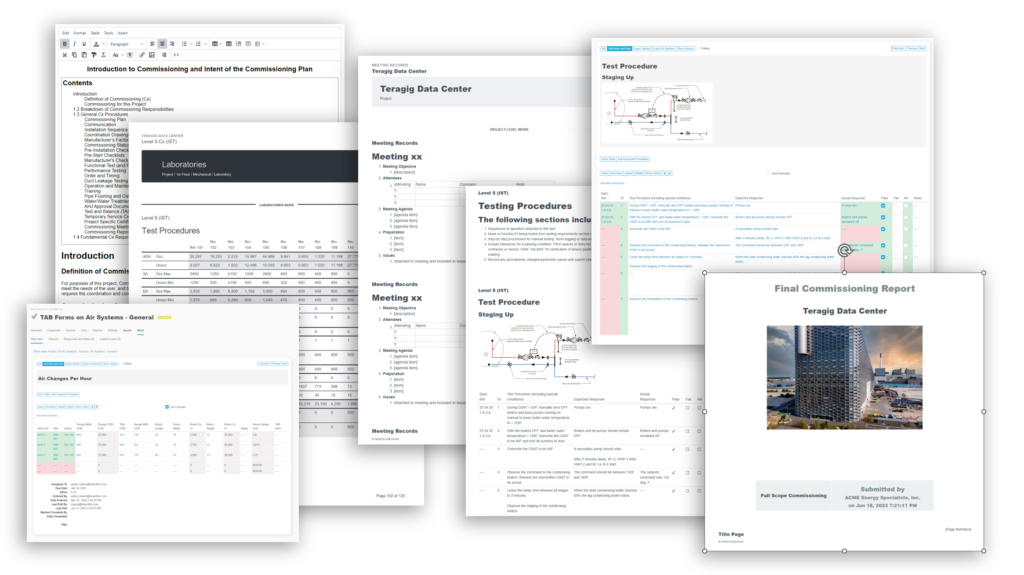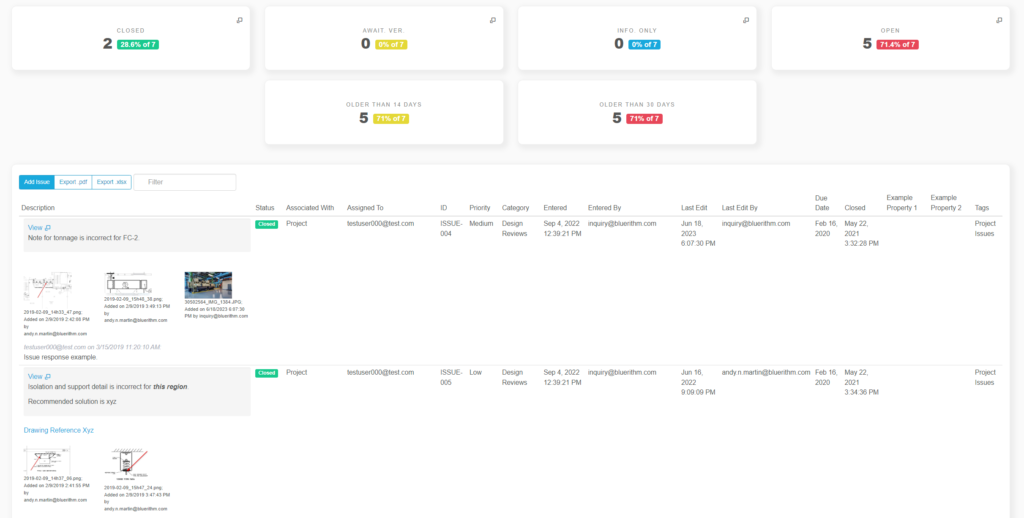The Anatomy of a Building Commissioning Program for New Construction or Retrofits
Commissioning ensures that building owners get what they pay for when constructing or retrofitting buildings, it provides insurance for policymakers and program managers that their initiatives actually meet targets, and it detects and corrects problems that would eventually surface as far more costly maintenance or safety issues.1
However, building commissioning is often confused with things it is not. Functional performance testing (FPT) is one example. FPT is only one aspect of a commissioning program. Building commissioning may also be viewed as a procedural process, or a “box that needs to be checked” within the pursuit of LEED accreditation, code requirements, or other organizational or policy mandates.
A robust and complete commissioning program will span all phases of the project, starting in pre-design and conceptual design activities, all they way through occupancy and operations.
It is worth noting that there is some resistance among various stakeholders in the design and construction industry where some aspects of a commissioning program are not fully embraced. This could be due to several reasons:
- The perceived overlap between the commissioning work during design phases, and the architect’s exploratory and programming work they do with their customers (developers and owners).
- The perceived encroachment of the commissioning provider on the mechanical, electrical and plumbing (MEP) design engineer’s responsibilities and expertise.
- The resistance of MEP contractors who may not feel the need for someone to “check” their work.
- General contractors who believe they have a robust quality control, issue management, and punch list system already in place.
Thus, it is important for commissioning providers to continue to educate the industry on the intent behind a robust commissioning program. Commissioning brings people with specialized skills and experience that span across phases and domains into the process, and is intended to bridge gaps that can otherwise be difficult to overcome for the traditional players alone.
In this article, the complete anatomy of a building commissioning program for new construction will be covered.
Pre-Design Phase
The pre-design phase is where the groundwork for the project is laid. It’s during this time that the scope of the commissioning program (in addition to its budget) is defined and documented, and where it will be fully integrated with the design team’s contracts, construction documents, and contractor’s contracts.
The commissioning provider’s contract should be directly with the owner, and the firm should have no other work on the project to avoid conflicts of interest.
The commissioning provider should have been selected before or during this process, and will be the primary entity managing the Owner’s Project Requirements (OPR). The OPR process is one that will likely have overlap with the architect’s exploratory and programming processes. This is ok, and should be acknowledged, and used in conjunction with the OPR, not opposed to or in isolation from it. It’s up to the commissioning provider to accurately explain this process and the purpose of the OPR.
The OPR defines the expectations, goals, benchmarks and success criteria for the project. The OPR must be developed with significant owner input and ultimate approval. The CxP typically assists the Owner in identifying the facility’s requirements regarding all building systems and assemblies, relative to such issues as energy efficiency, sustainability, indoor environmental quality, safety, security, assembly quality, reliability, flexibility, redundancy and cost, staff training, operation and maintenance and commissioning rigor. 2
The OPR can be considered a living document, where updates will likely occur at each stage of the project.

Design Phase
During the design phase, the commissioning provider ensures that the construction documents have fully incorporated everything in the OPR, including the integration of the commissioning scope.
The commissioning provider will review each iteration of the construction documents and give feedback to the design team that includes any inconsistencies found between the basis of design (BoD) and the OPR, as well as provide opinions on constructability, potential alternative options in technologies or approach, and other general feedback based on field experience.
It’s during the design phase that the commissioning provider will begin to conduct commissioning meetings to build cooperation and cohesiveness around the commissioning program, which implicitly entails the complete project.

Design Phase2
Construction Phase
The commissioning activities in the construction phase typically receive the most attention, and often involve the greatest expenditure of resources within the commissioning program. The work that makes up functional performance testing (FPT) is most often recognized as being “commissioning” in today’s environment.
In addition to FPT, there are generally extensive checklists and other documentation that records contractor’s installation activities from early pre-work, to final system energizing and start-up and testing procedures. Commissioning providers will also typically document general construction progress with site observations, where they visit the site with regular cadence and document the state of the building and systems with notes and pictures.
An equally critical responsibility of the commissioning provider during this phase is issue discovery, management, and resolution. The provider will record issues in a formal log, and will coordinate cooperatively with the project team to drive efficient and satisfactory resolution to all issues.
Successful construction phase commissioning is a well coordinated quality assurance process that encompasses installation, start-up, functional testing and training. During the construction phase the commissioning team works to ensure that equipment, systems and assemblies are properly installed, integrated, and operating in a manner that meets the Owner’s Project Requirements (OPR). Functional testing and documentation provide valuable performance benchmarks, acceptance criteria and a baseline for the future operation and ongoing commissioning of the facility.2
There will be extensive interaction and coordination between the commissioning provider and all stakeholders (owner, design team, and contractors) during the construction phase. The commissioning provider will be responsible for regularly conducting effective commissioning meetings and documenting meeting minutes.
The commissioning provider will review all as-built documentation and operation and maintenance manuals (O&M’s), and provide feedback or request revisions where there is lacking information or inconsistencies with actual conditions or test results.
It is often at the end of the construction phase that the commissioning provider will compile all documentation from the commissioning program and produce a final report. The report should include the OPR and collateral related to its development and iterations, FPT documentation, checklists showing proof and history of all necessary procedures and steps related to installation activities, site observations, issues logs with complete histories, and any other relevant information.
There are software tools available to assist with managing the extensive documentation, reporting requirements, online collaboration, and overall process of commissioning projects, and they can improve quality, efficiency, and transparency of the commissioning provider’s work. BlueRithm is one of those tools (and the publisher of this article), and it has a simple user interface and powerful report automation features.

Construction Phase2
Occupancy and Operations Phase
This phase occurs after substantial completion of the construction event, and involves following up with facility users, seasonal testing, and potentially some final close out of issues that had not been address at substantial completion.
An important component of this phase may include energy bench-marking, where its compared to the design estimates or against previously measured energy consumption data. This may be related to an ongoing commissioning program that is put in place to help avoid drift of the performance of systems and to continuously optimize the performance and usability of the building, as well as other related operational programs.
There may be updates to the final commissioning report during this phase. This is also a time to reflect on the success of the commissioning program, and to identify and document successes and challenges to be used in future programs.
The Occupancy and Operation Phase normally begins at Substantial Completion. This last phase of the New Construction Commissioning focuses on finalizing all uncompleted functional testing, training and project documentation while fine tuning building performance prior to project completion.2

Occupancy and Operations Phase2
Stop over at www.BlueRithm.com to see what we’re doing to help deliver successful and efficient commissioning projects.
References
- Evan Mills, P. (2009, July 21). A Golden Opportunity for Reducing Energy Costs and Greenhouse Gas Emissions. Retrieved from Lawrence Berkeley National Laboratory: http://cx.lbl.gov/documents/2009-assessment/lbnl-cx-cost-benefit.pdf
- (2016). New Construction Building Commissioning Best Practices. Hillsboro, OR: Building Commissioning Association.

